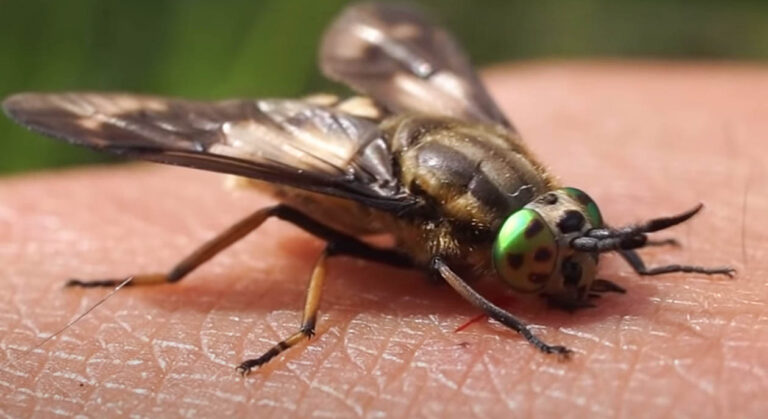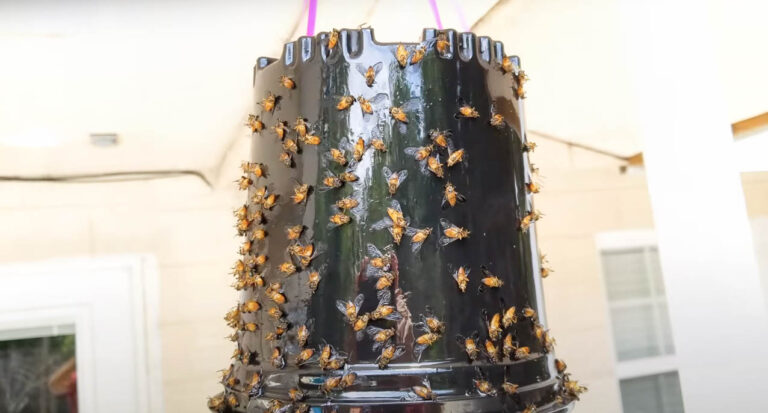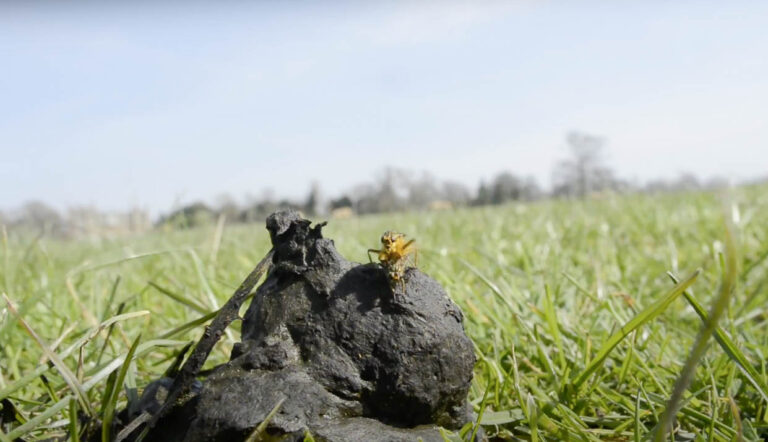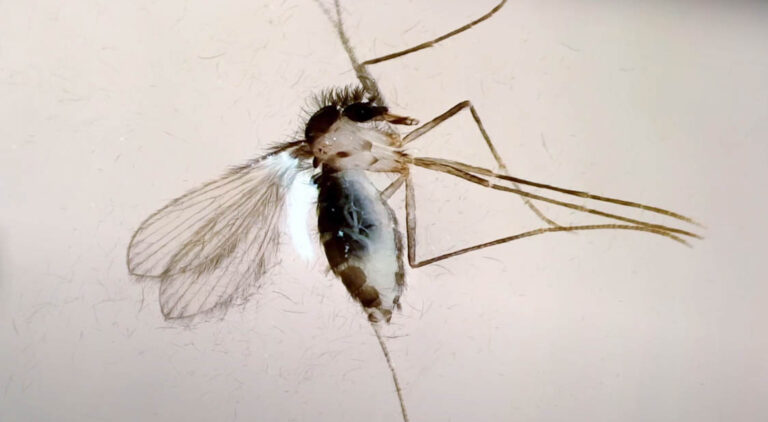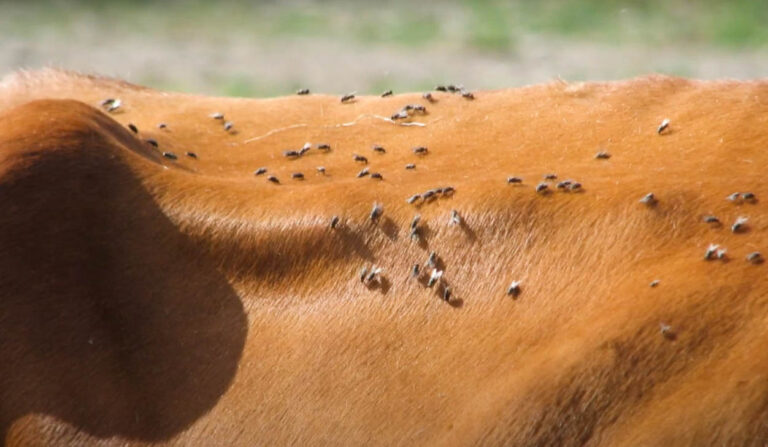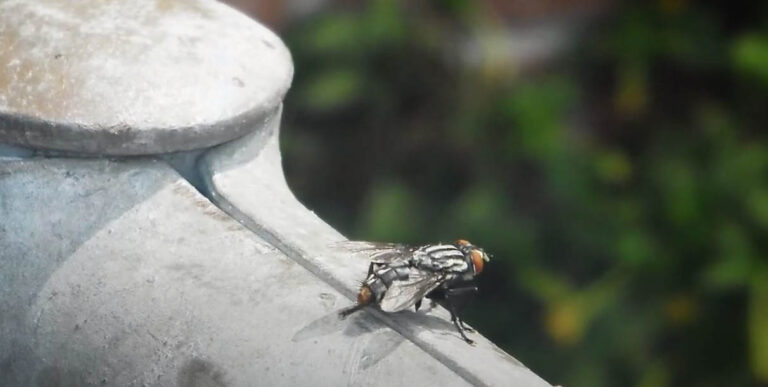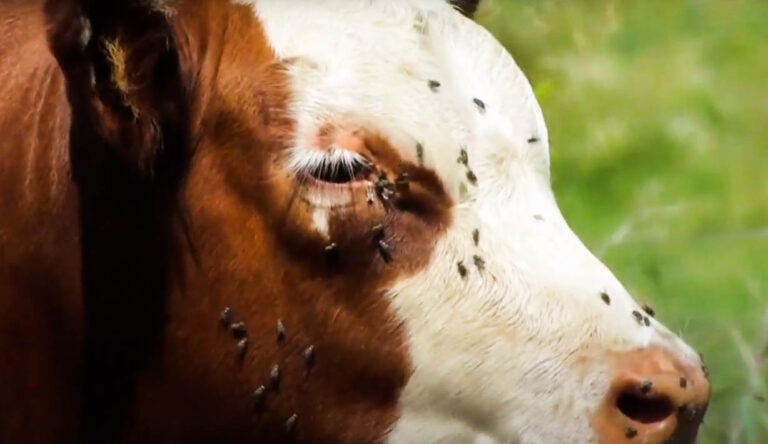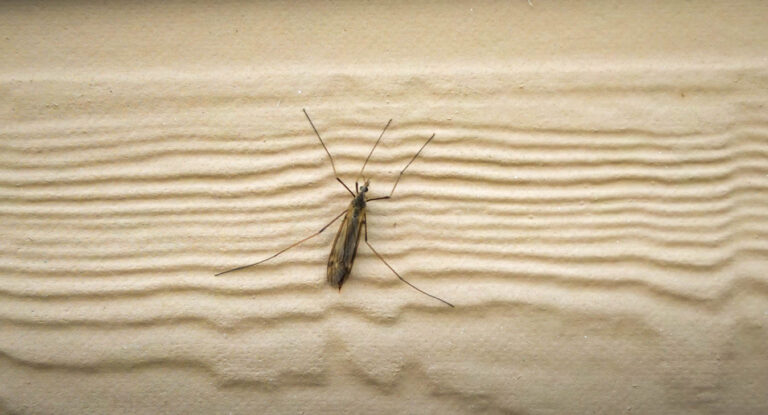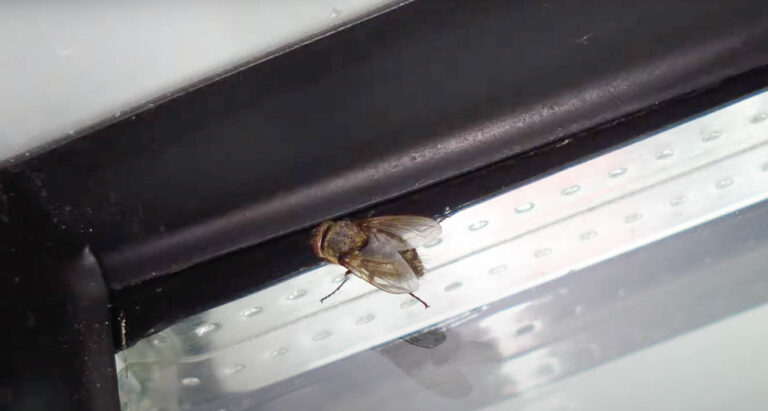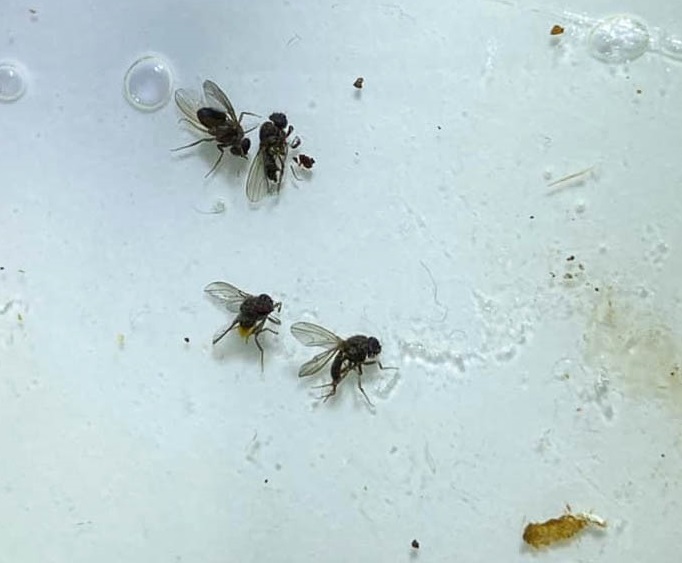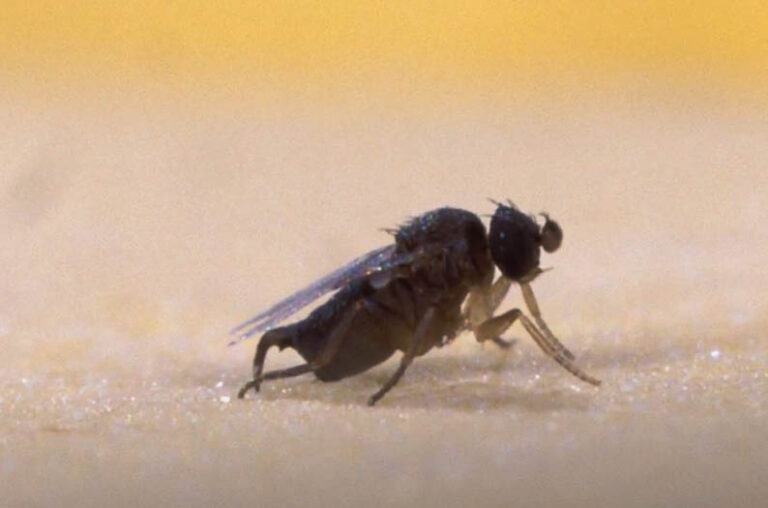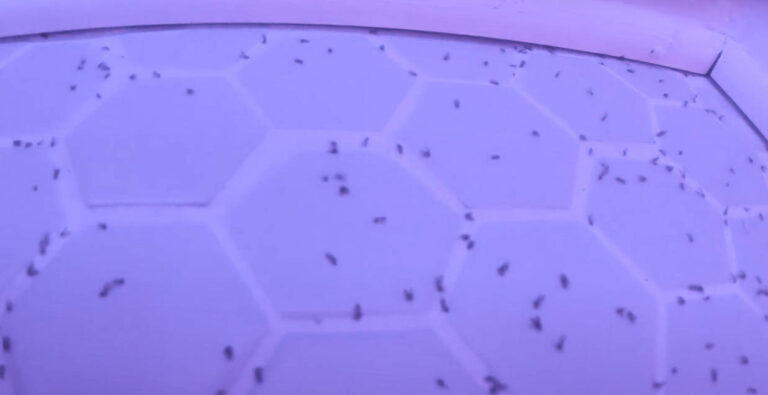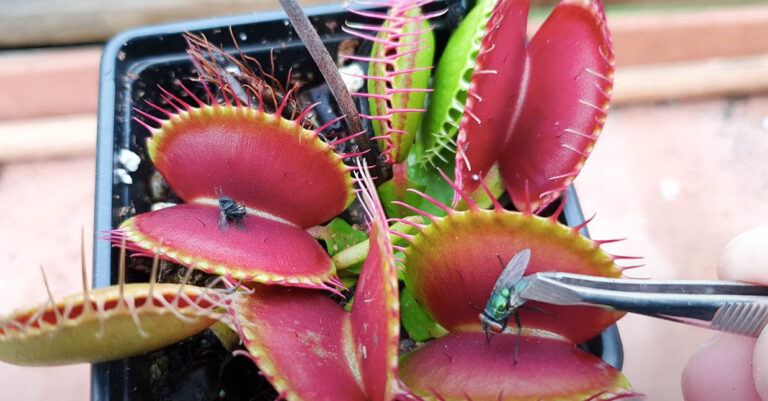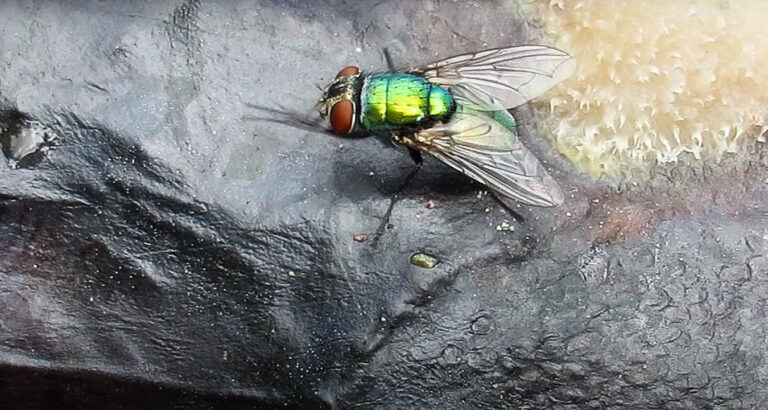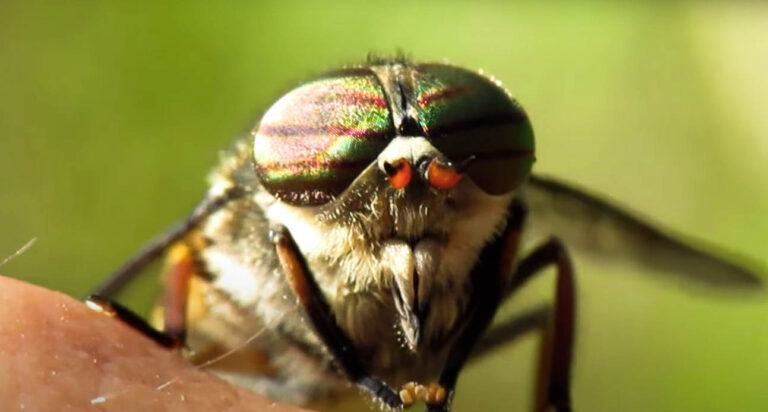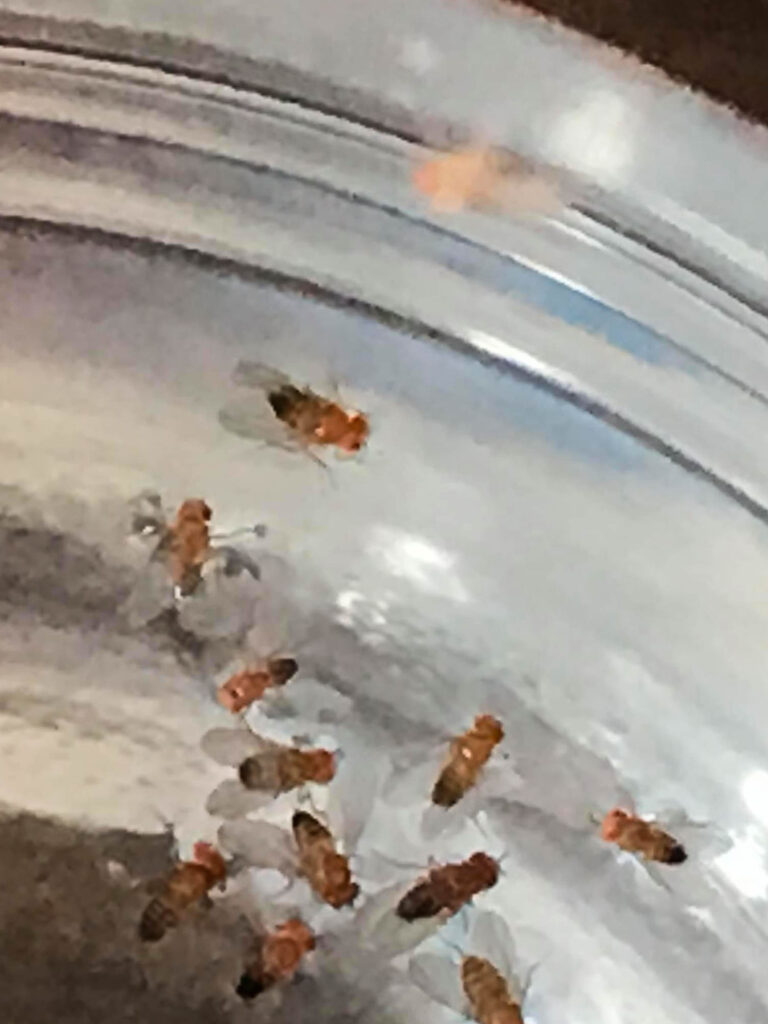About the Cluster Fly
Appearance
Cluster flies are often mistaken for house or bottle flies at first glance. However, a closer inspection will discern some noticeable differences. Unlike bottle flies with their shimmering metallic exoskeleton, cluster flies have a dark grey coloring. Their body is covered in a layer of golden or yellow hairs. Meanwhile, their abdomen is striking for the silver checkered patterning. On average, cluster flies are around 8 to 10 mm (0.3 to 0.4 in) in length. This makes them larger than the average housefly. But they are also darker in color, as well as lacking the classic housefly striping. Two wings are attached at the sides of the thorax, with intricate veining. And like all insects, they have six segmented legs. Their head is short and stunted, being marked by their two large dull red eyes.
Behavior
In contrast to house flies and bottle flies, the cluster fly is surprisingly sluggish in movement. So, if you see a fast-moving fly that’s difficult to catch, it’s probably not a cluster fly. Instead, cluster flies, as the name suggests, cluster. If you see one, it is often the sign of more. However, aside from being an annoyance, don’t be too concerned. Cluster flies pose no harm to human health. Unlike their cousins, cluster flies are not attracted to rotting or decomposing animal bodies or feces. Instead, adult cluster flies mostly feed on plant matter, including pollen. As such, because they lack the necessary anatomy, they are unable to bite humans.
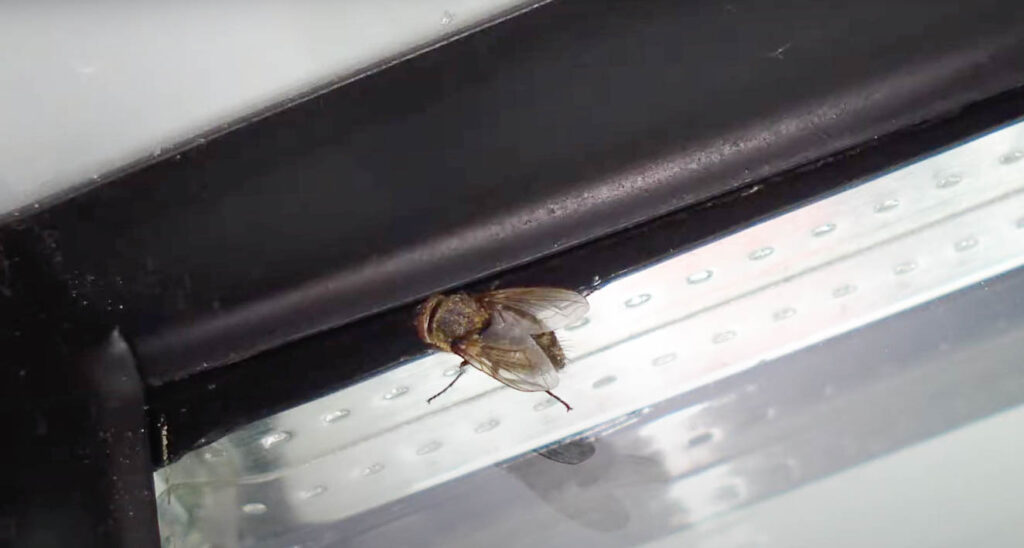
Life cycle
Cluster flies have an odd life cycle. Unusually, they are known for being a parasite of the earthworm. Mating typically occurs prior to the winter. The females gestate and lay their eggs. Over the next few months, the eggs remain dormant, hatching in the spring. Eggs are usually laid in soil or animal feces. If the soil is disrupted or plowed, this can disrupt this part of the flies’ breeding cycle. However, not all eggs are laid in the winter. In an average season, there are at least three to four generations of cluster flies. Once hatched, the cluster fly larvae hunt for earthworms. They enter the earthworms via their body cavities and then feed on their host for a few days. During this stage, the larvae are growing in size. This process can continue for around two to three weeks. Following the larval stage, the cluster fly enters into the pupal stage. This involves forming a shell around their body. Inside the shell, the larvae’s body reforms. Metamorphosing from a maggot into a full-fledged cluster fly. The pupal stage can last 11 to 14 days. Then, at the end of the transformation, a cluster flies heads off, ready to start the cycle again. In total, the life cycle of a cluster fly is 30 to 50 days.
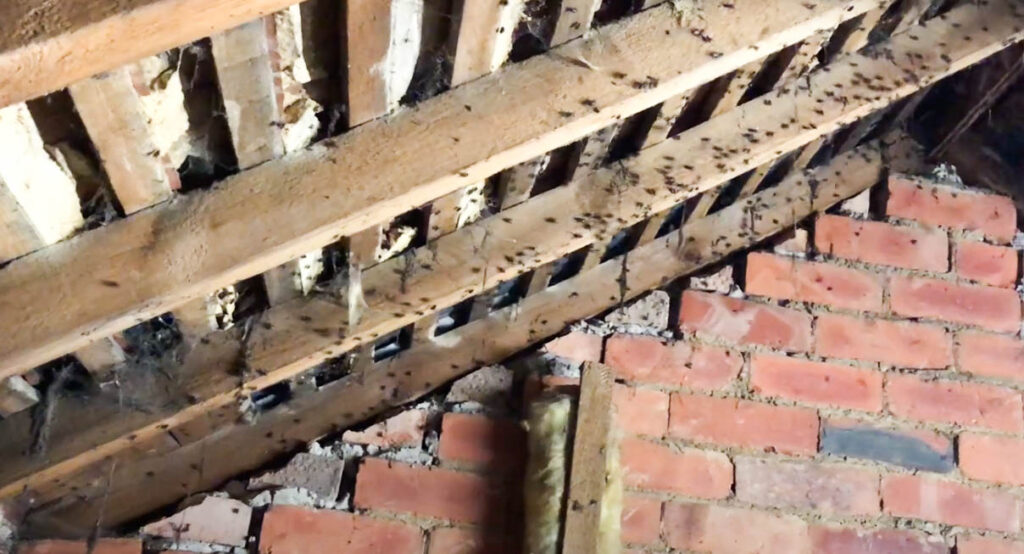
Habitat
Cluster flies are renowned for entering buildings as the weather turns colder. As soon as the fall hits, large numbers of cluster flies can be seen gathering inside of windows or door frames. They enter buildings through any small opening or crack they can find. And they will remain for the entire duration of winter if they can. Typically, they will try to isolate themselves. Often this means venturing into attics or false ceilings. A common sight for attics is fiberglass insulation full of the bodies of cluster flies. Naturally, they will stay in the bark of trees or holes in the ground during winter. They will then remain there until the temperature reaches above 12 degrees Celsius. You can also find cluster flies near a light source during the spring and summer months. They are strongly attracted to light. Additionally, even in the warmer parts of the year, cluster flies may still enter homes to avoid a cold evening. Therefore, it can be sensible to fill in any holes or cracks.


